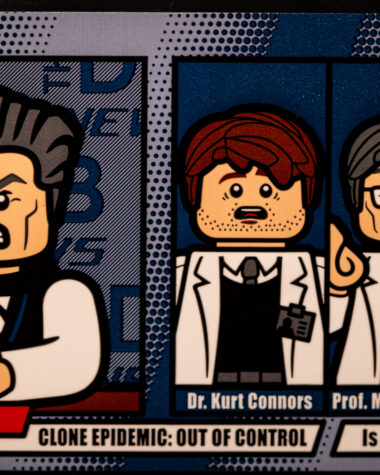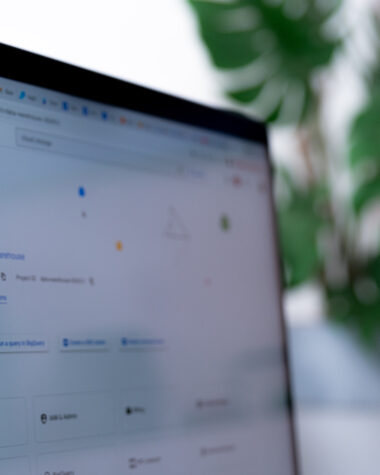This blog post will help you understand what is a customer persona and how you can create your own personas to provide insights into your customers goals and barriers.

Takeaways
- Customer personas help you understand your ideal customers and create targeted marketing materials that connect with them.
- Research is essential for creating accurate customer personas, and you can gather data through customer interviews, analyzing web data, reviewing customer data, and conducting surveys.
- Customer personas provide insights into customers’ goals and barriers, allowing you to tailor your messaging and content to their specific needs, increasing the effectiveness of your marketing efforts.
Defining your ideal customer
We’re bombarded with marketing and advertisements all day. So as a marketing professional, how do you get a brand to stand out? You must create messaging and materials that connect with your customer. Before you start creating marketing materials, you need to know who you’re marketing to.
So that’s why you need to define your ideal customer. One way to do that is by creating a customer persona. A customer persona represents a group of similar people in a desirable audience. They can help you figure out how to reach people at the right time, with the right message, offer, and products. The customer persona we’ll be discussing is very simple. It includes who the person represents, also known as their characteristics, their goal, or what they want to achieve, and the barrier to reaching their goal, also called a pain point.
So, why create customer personas in the first place? Well, one reason is to better understand the customer’s perspective. With a persona, you’re imagining things through that individual’s point of view. This is more specific than a target audience, which is more broad and general than a persona. When creating marketing material such as an advertisement or an email, you should consider the customer’s priorities.
Like what message or visuals will best appeal to them? Does it help them reach their goals or relate to their pain points? Another reason is once you understand who your customer is, it’s easier to create customized content for them. You’ll understand how they think, what they want to achieve, and what’s holding them back from making a purchase. The last reason to create customer personas is for effective ad targeting.
Example: marketing campaign for a six-person tent
Based on the company’s research, the marketing team determines one of the persona’s elements is a parent or guardian. They continue doing research on demographics and learn that they’re in their mid-30s to mid-50s and have two to three children. After conducting in-person interviews, the marketing team learns that their general goal is to purchase a budget-friendly tent that will last for several years. You’ll also learn that a common barrier to purchasing a large tent is concern about setting it up due to a frustrating prior experience. With this persona, you can create materials accordingly.
For example, an online ad could read like, “easy to set up tent for the whole family.” You can also target this ad to people who fit the demographic profile. Remember, you can certainly go in more depth on the demographics, the goals, or the barriers for this customer persona. Excellent! Now, you have a working knowledge of customer personas, which will help you connect with customers in your future digital marketing role.
Creating a customer persona
Collecting information
When crafting a customer persona, you’ll need information about your ideal customers. You shouldn’t just guess. You need actual data. The thing is you’ll likely need to do research to collect this information. Here are a few ways to do the research.
The first is to review customer data. It’s possible the business already has existing data about its customers. Review this for information for details such as demographics, location, sales history, and customer service notes.
A second way is to conduct customer interviews. Like, consider interviewing customers directly about their experience with the product or service. Ask questions such as what brought them to the product, how did it solve their problem, and if appropriate, consider collecting information on their other interests as well to form a more detailed persona.
Another way is to send out surveys. A simple method to collect information is to email a survey out to current customers. You may find that participation is low on this particular type of strategy. So instead encourage survey participation by giving away something for free to one of the customers who fills out the survey.
Drafting the persona
Now, once you’ve done your research, the first part of creating a persona is defining who your customer is. This includes defining your persona’s interests, traits, and demographics.
Now, the more detailed your personas, typically the more personas you will create. This aligns your advertising language to many members of your audience. Now, once you determine the persona’s interests, traits, and demographics, it’s time to get specific about their goals and barriers.
Defining customer goals
To create the goals and barriers, you should primarily rely on the data you collect about customers, such as surveys and interviews. For the customer persona goal, get specific about the customer and what they want to achieve. This goal needs to be related to the product or service.
For example, if it’s a landscaping business, the customer wants great looking greenery. Reviewing the data, you also identify additional goals they may want to achieve. Some of the customers just want peace of mind that their plants and property will be taken care of. For other customers, it’s pride in the look of their landscaping.
While you’re relying on your data to form the goal and barrier, it’s okay to include additional details. For instance, maybe customers consistently said they want their landscaping to look good. You can infer they want to feel pride in their home.
Defining customer barriers
Now, after identifying goals, consider the barrier, or what’s preventing the customer from achieving their goal. You can also consider what’s keeping the customer from hiring the company. Again, review the customer data, including the surveys and interviews.
Can you identify any barriers? Continuing with the landscaping example, when reviewing the customer survey, you noticed a few recurring barriers.
Some customers say they don’t have time to take care of their lawn. Others state they’ve tried but don’t believe the lawn looks any good. Another group stated they simply just don’t have the equipment. Consider a barrier related to hiring the company.
One could be that they don’t trust landscaping companies because they received poor service in the past. Now that you have the demographic information, the goals, and the barriers, combine that information to create your personas.
Following the landscaping example again, one persona could be A 55-year-old woman in the city with a small yard and a garden. She has been taking care of her own yard for five years but currently doesn’t have the time to do it.
A second persona could be a 30-year-old new homeowner. They’ve never worked with landscaping before and just moved to the suburbs. And a third persona could be a 27-year-old, budget-conscious renter in a rural area.
They’re trying to get basic landscaping to keep up with their homeowners’ association demands.
What to do after you have your personas
Now, let’s imagine you’ve completed a few personas. Now what do you do with them? A best practice is to keep them readily available. Whenever you work on any marketing material, consider all of your personas. Who are you trying to reach? What visuals and messages appeal to them and what online platforms do they spend their time on?
That’s the power of a persona. Instead of just guessing or combining all personas together, you have specific data about who your customers are. You know what they want to achieve and the barriers that keep them from achieving those goals.
Creating customer personas can help you better understand and empathize with your target audience. The process begins with researching and identifying who your customers are. Then you group similar customers together and create a customer persona to represent each group.
Why customer personas make a difference?
It’s important to remember that customer personas are based on the research and information you have about your actual customers. Accurate customer personas based on research help you better connect with your target audience.
Creating customer personas will help you approach your work from the customer’s point of view. Your marketing messages, your brand voice, and your email and social media campaigns can all benefit from knowing the customer at a deeper level.




